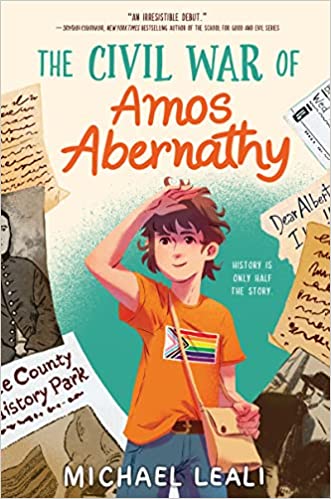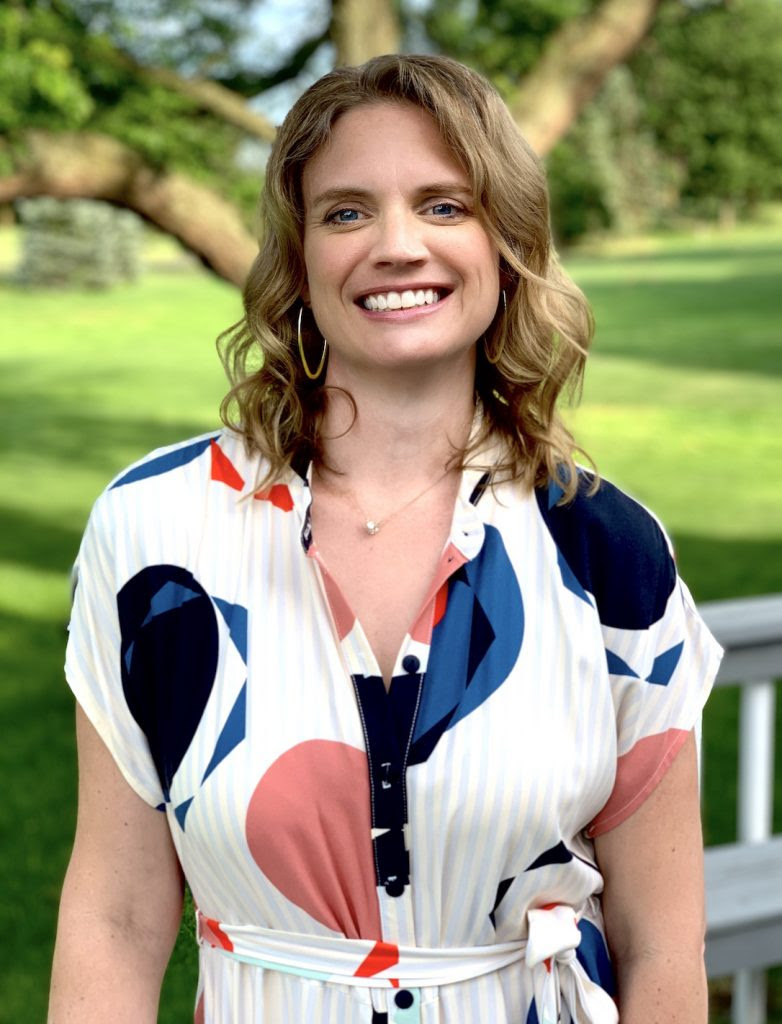Michael is someone who truly loves writing and because of that he really digs the craft of writing and works hard to become better at it. He’s warm, funny, kind, and an incredibly hard worker. All of these characteristics make him an excellent writer. ~ Erin Nuttall
KidLit Craft: What inspired you to write The Civil War of Amos Abernathy?
Michael Leali: The inspiration for The Civil War of Amos Abernathy began as this tug on my heart to write something connected to my own lived experience. I’d just wrapped up a major revision of a middle grade fantasy, and I needed to dig into something concrete for a while. Different aspects of my identity rolled around in my head: being homeschooled on and off through seventh grade, my conservative Christian upbringing, my identity as a gay man (and a painfully closeted young person), and my preteen experience volunteering as a 19th century American historical reenactor.
These things had been floating around in my head for a while, but I didn’t have a story. As I tried to tie these pieces of my personal history together, a question arose from the intersections: where is the history of LGBTQ+ people? In particular, where are the stories of queer 19th century Americans?
I was nearly thirty when I started this project, and I was embarrassed/shocked/horrified that I hardly knew anything about LGBTQ+ history, American or otherwise. At least, not much pre-dating Stonewall. My sudden urgent need to find my queer anscestors sparked the plot of this novel; I realized that Amos Abernathy, my protagonist, would have the same questions and desires I had.
From there, I went to Google on my quest to find a member of the LGBTQ+ community from Illinois, where I live, who existed during the 19th century. And that’s when I found Albert D.J. Cashier, the Union soldier who today would likely identify as a trans man. Even though Albert and I don’t share the same identity, reading his story made me feel seen and grounded in a way I’d never felt before. Finding Albert was the last piece I needed to start bringing this manuscript to life.
KLC: You’re a high school teacher, how does that help you as a writer?
ML: I always learn more when I teach. That goes for writing instruction as much as it does learning how to be a person who interacts with other people.
When it comes to writing, I’ve taught everything from short stories and verse to research papers and argumentative essays. It’s one thing to do it on your own, to trust your instincts and what you’ve been taught, and another to foster someone else’s growth and understanding. The more I need to distill my own writing process and understanding of language for my students, the more I improve as a writer and storyteller.
On a human level, being around my intended audience all the time is such a gift. My favorite part of teaching is getting to know my students. I love listening to their stories, hearing their fears and their joys. All of my interactions with young people inform my writing in some way, even if I’m not consciously aware of it at first.
KLC: Can you tell us a bit about your writing process?
ML: Every manuscript seems to have its own distinct journey, but every story I write begins with an awful lot of daydreaming, staring into space, jotting a phrase or two onto a sticky note, and coming up with a working title.
Once I feel like I’ve spent enough time in my imagined world, I either write a super brief outline or get right to drafting. I write as much as possible over the course of several days or weeks. Sometimes I write a whole draft, arriving at an end without much of a hiccup. But there are times when I need to pause, daydream and outline a bit, and then continue on.
I used to reread and revise the early pages of my first draft, but now I push forward until I reach the end. At most, I allow myself to revisit the previous chapter after I come back from a break. That allows me to remind myself of the voice and the plot, but I don’t spend time revising that chapter.
Once the first draft is done, it sits. Sometimes a week, sometimes a month. Maybe more. Then I reread and revise and revise and revise! When I feel like the manuscript is coherent, cohesive, and free of as many errors as possible, I’ll share it with my critique partners. Then I take their feedback and revise some more. All of this happens before I share it with my agent.
KLC: Is your process different when you write PB vs. MG vs. YA?
ML: My process is pretty much the same for everything! Daydreaming and not rushing to write the first thing that comes to my mind is an important step no matter what project I’m working on, and I do dabble in picture books, middle grade, and young adult.
KLC: Pantser, plotter, or plants?
ML: I’m a plantser. For my first draft, I really like to let the story reveal itself to me after I’ve dreamed up lots of possibilities in my head. After it’s on paper, I apply all the plotter and structure-based skills I have to make it a true story.
KLC: Character first or plot first?
ML: Depends on the story! And sometimes both at the same time. Every story has its own agenda and I’m just along for the ride.
KLC: How does side writing fit into your process?
ML: To be honest, I very, very rarely do side writing. Though, I would argue that the daydreaming I do is 1) writing that sometimes doesn’t hit paper and 2) is a form of side writing. I just can’t show the physical evidence of it to you!
KLC: How does play fit into your process?
ML: Storytelling is all play! If I’m not having fun and enjoying the process of writing, it’s probably time for a break. Granted, when you’re on deadline, it’s hard to fully step away. For me, drafting is where the play really happens. Revision becomes a combination of work and play.
KLC: Amos discusses some important issues for kids today and yet he remains a relatable, fun, and engaging character. Do you have any tips for fellow writers who are working on “issue” books?
ML: Well I’m so glad you think so! I think all books have “issues” at the heart of them—writing about things that matter to the human experience is why we tell stories! Sometimes, though, the idea/argument of the novel can supersede character, and I think that takes away from the story overall because it rings as inauthentic. As long as writers stay true to their characters and let them live authentically on the page, the subject matter of the book won’t overshadow the heart and flaws of the humans living within those pages. Ask yourself: is this me talking, or is this my character? Would he/she/they really say or think something like that? If the answer is no, it’s time to rethink the situation.
KLC: How has craft study informed your writing?
ML: Studying craft has completely transformed my revision process. I could write words all day long and they could take up thousands of pages, but that wouldn’t make them a story. I don’t think I fully understood the shape and dimensions of story until I really dug into my study of craft. I think it’s an essential part of every writer’s journey.
KLC: What’s next on the horizon for your fans?

ML: My second middle grade novel, Matteo, comes out summer 2023 from HarperCollins. I’m beyond excited about this book! Unlike The Civil War of Amos Abernathy, this novel is a contemporary fantasy and a very loose retelling of Pinocchio. My first love was fantasy, so it feels great to be writing something with tree magic, a sassy goldfish, family secrets, and so much more. I can’t wait for the world to meet Matteo Lorenzini and his friends next year.
Michael received his MFA from Vermont College of Fine Arts. When he’s not dreaming up stories, he’s probably playing a board game, eating cheese, or grading papers somewhere in the suburbs of Chicago. The Civil War of Amos Abernathy is his debut novel.
Michael Leali identifies as white, cisgender, gay, and uses he/him pronouns.
Check out more MG author interviews:
Erin Nuttall holds an MFA in Writing for Children and Young Adults from Vermont College of Fine Arts and is an active member of SCBWI and ALAN. She lives outside of Chicago with her family where she writes stories for middle grade and young adult readers that offer a humorous take on friendship, identity, feminism, and romance.



COMMENTs:
0